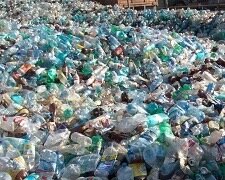Accounting for litter makes plastics more costly
 In the debate between plastic and…well, virtually everything else that plastic has replaced, such as paper, cloth, steel, or glass, trying to determine which material is actually better for the environment is often complex and nuanced. A way to sort it out is using the technique of life cycle analysis, which considers the entire lifetime of a product to quantify if plastic is a better or worse alternative from an environmental standpoint.
In the debate between plastic and…well, virtually everything else that plastic has replaced, such as paper, cloth, steel, or glass, trying to determine which material is actually better for the environment is often complex and nuanced. A way to sort it out is using the technique of life cycle analysis, which considers the entire lifetime of a product to quantify if plastic is a better or worse alternative from an environmental standpoint.
And even those results are nuanced. Whether the product is diapers, grocery bags, or water bottles, the environmental impact depends on how much energy is used to manufacture the product, and how often the product is reused. For example, studies indicate that a steel water bottle would need to be used 500 times to be a better option than plastic, and cotton grocery bags would have to be reused 171 times to have a lower impact than the vilified HDPE grocery bag.
But, as pointed out by Daniel Goleman, these life cycle assessments do not take into account the consequences of littering. The very same properties of polymers that make them such great materials, such as durability, chemical stability, and resistance to rot, are the same reasons why they persist in the environment long after their usefulness. Goleman notes that only 7% of all plastics get recycled, and he further notes that most “biodegradable” plastic really don’t biodegrade. These polymers have metal additives that hasten oxidation and break the product into tiny fragments. But these plastics fragments remain in the environment for a long time.
Related articles
-
Will William & Kate’s wedding be a royally green affair?
And all of this plastic debris has a harmful effect on the environment. Rotating gyres of plastic garbage larger than the state of Texas are found in the oceans. Fish mistake bits of plastics for krill, and albatrosses kill their fledglings by feedings them bottle caps. Including these and other costs of litter in the life cycle assessment of plastics would produce a very different result from the ones we now get.
So what should be done about all this garbage? There are some solutions to reduce plastic waste. One is to turn waste plastics into a valuable raw material for other uses, such as fuel. Another would be do develop bioplastics that truly biodegrade. But the simplest – and most immediate – solution is to avoid single-use plastics. That, however, is much easier said than done.
Advertisement
Follow us

